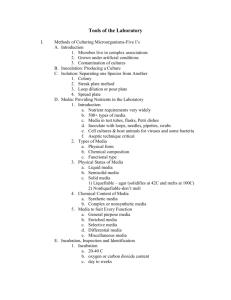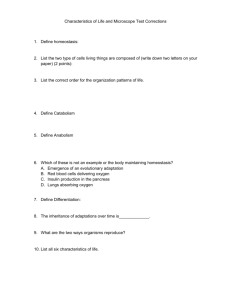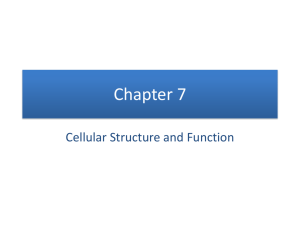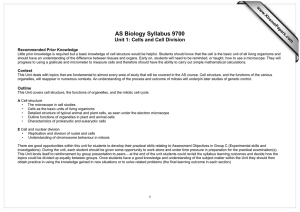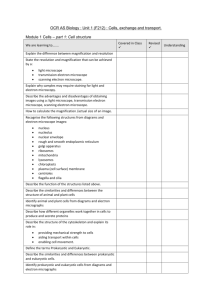Module 1 Unit 1 – Cells (F211)
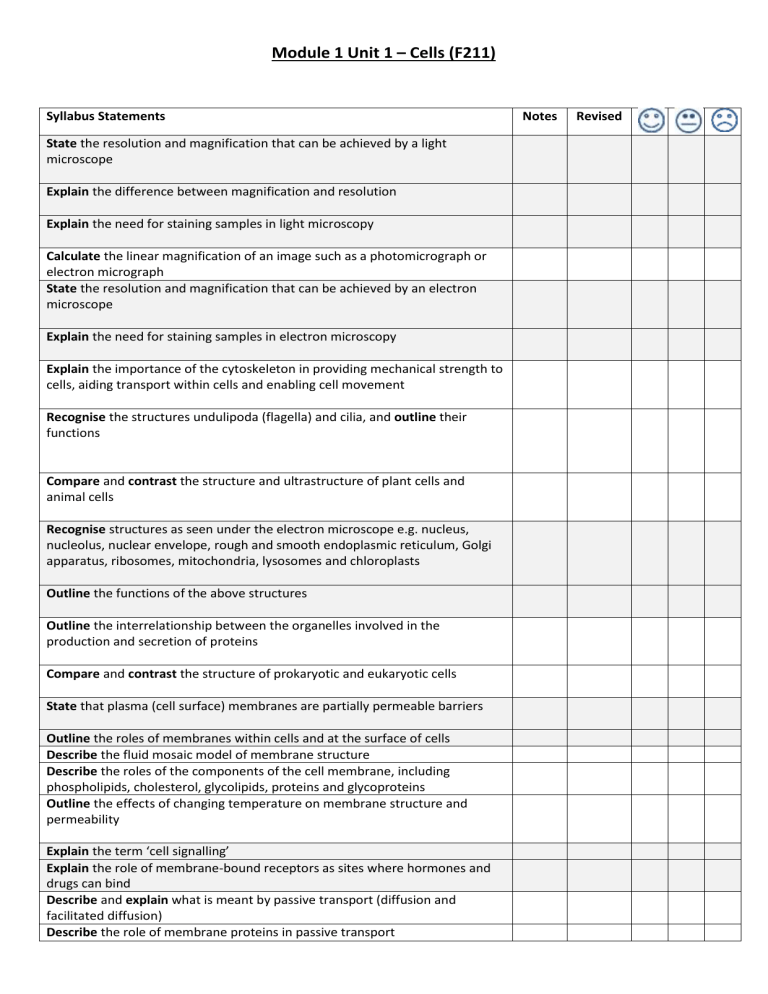
Module 1 Unit 1 – Cells (F211)
Syllabus Statements
State the resolution and magnification that can be achieved by a light microscope
Explain the difference between magnification and resolution
Explain the need for staining samples in light microscopy
Calculate the linear magnification of an image such as a photomicrograph or electron micrograph
State the resolution and magnification that can be achieved by an electron microscope
Explain the need for staining samples in electron microscopy
Explain the importance of the cytoskeleton in providing mechanical strength to cells, aiding transport within cells and enabling cell movement
Recognise the structures undulipoda (flagella) and cilia, and outline their functions
Compare and contrast the structure and ultrastructure of plant cells and animal cells
Recognise structures as seen under the electron microscope e.g. nucleus, nucleolus, nuclear envelope, rough and smooth endoplasmic reticulum, Golgi apparatus, ribosomes, mitochondria, lysosomes and chloroplasts
Outline the functions of the above structures
Outline the interrelationship between the organelles involved in the production and secretion of proteins
Compare and contrast the structure of prokaryotic and eukaryotic cells
State that plasma (cell surface) membranes are partially permeable barriers
Outline the roles of membranes within cells and at the surface of cells
Describe the fluid mosaic model of membrane structure
Describe the roles of the components of the cell membrane, including phospholipids, cholesterol, glycolipids, proteins and glycoproteins
Outline the effects of changing temperature on membrane structure and permeability
Explain the term ‘cell signalling’
Explain the role of membrane-bound receptors as sites where hormones and drugs can bind
Describe and explain what is meant by passive transport (diffusion and facilitated diffusion)
Describe the role of membrane proteins in passive transport
Notes Revised
Syllabus Statements
Describe and explain what is meant by active transport, endocytosis and exocytosis
Explain what is meant by osmosis, in terms of water potential
Recognise and explain the effects of different solutions of different water potentials on plant and animal cells
State that mitosis occupies only a small percentage of the cell cycle and that the remaining percentage includes the copying and checking of genetic information
Explain the significance of mitosis for growth, repair and asexual reproduction in animals and plants
Describe, with the aid of diagrams, the stages of mitosis
Define the term stem cell
Explain the meaning of the term homologous pair of chromosomes
Outline the process of cell division by budding in yeast
State that cells produced as a result of meiosis are not genetically identical
Define the term differentiation with respect to the production of erythrocytes and neutrophils derived from stem cells in bone marrow, and the production of xylem vessels and phloem sieve tubes from cambium
Describe and explain how cells become specialised for different functions, with reference to erythrocytes, neutrophils, epithelial cells, sperm cells, palisade cells and root hair cells
Explain the meaning of the terms tissue, organ and organ system
Notes Revised
